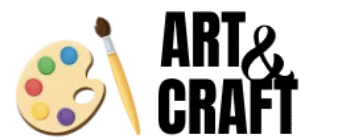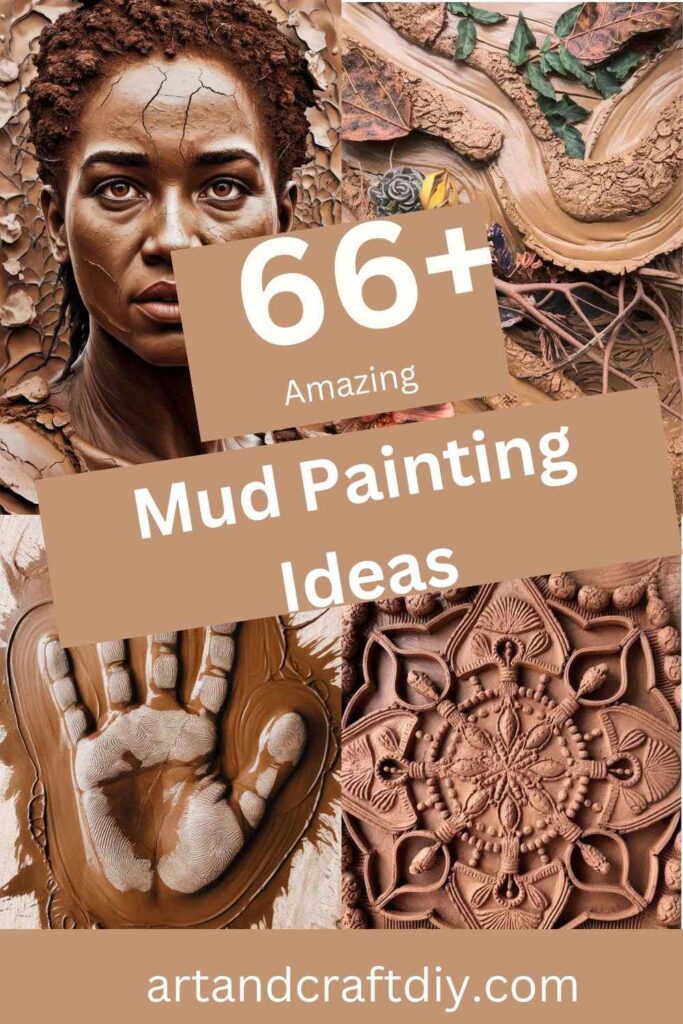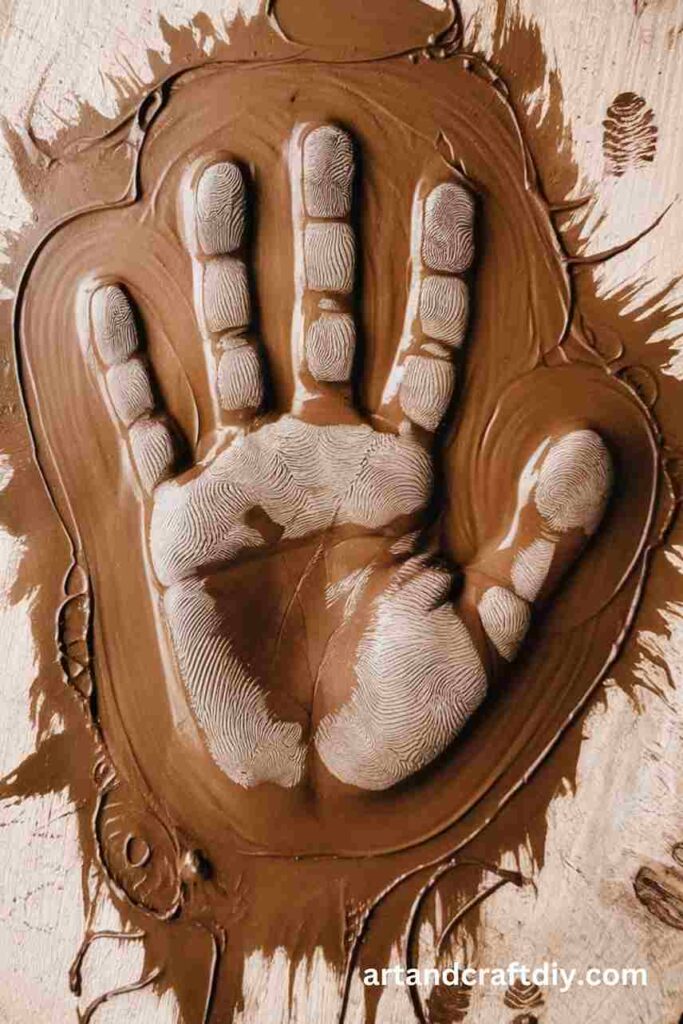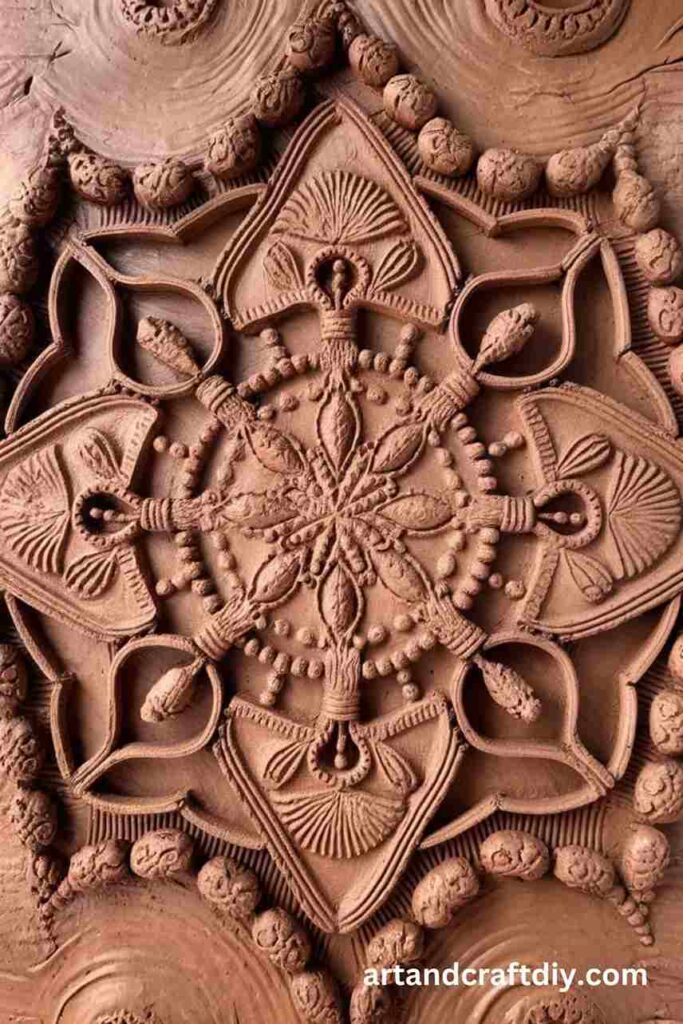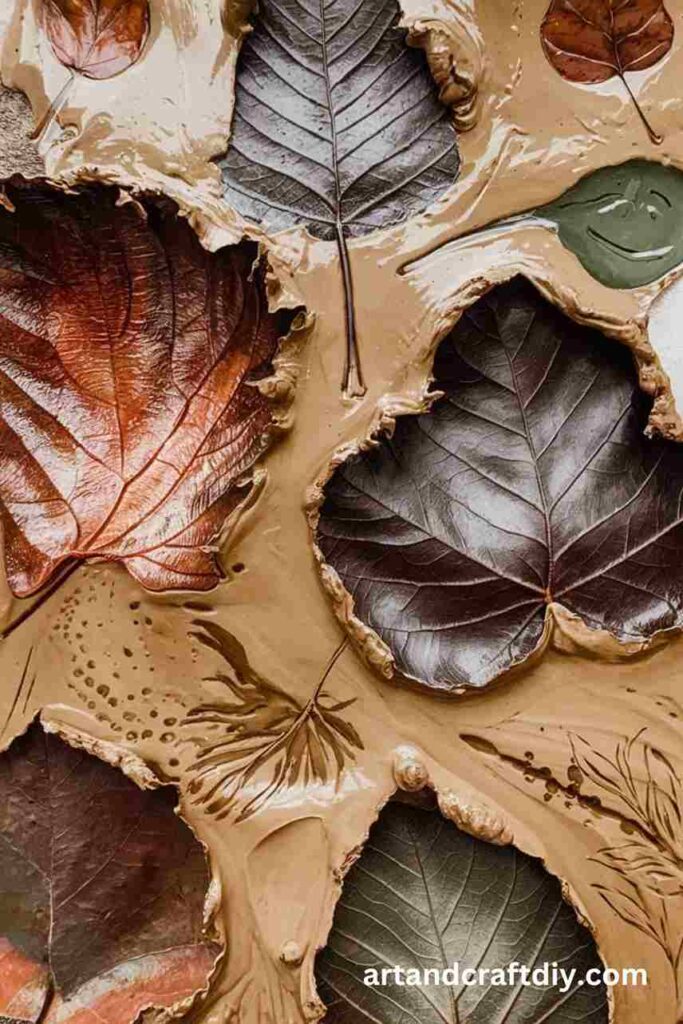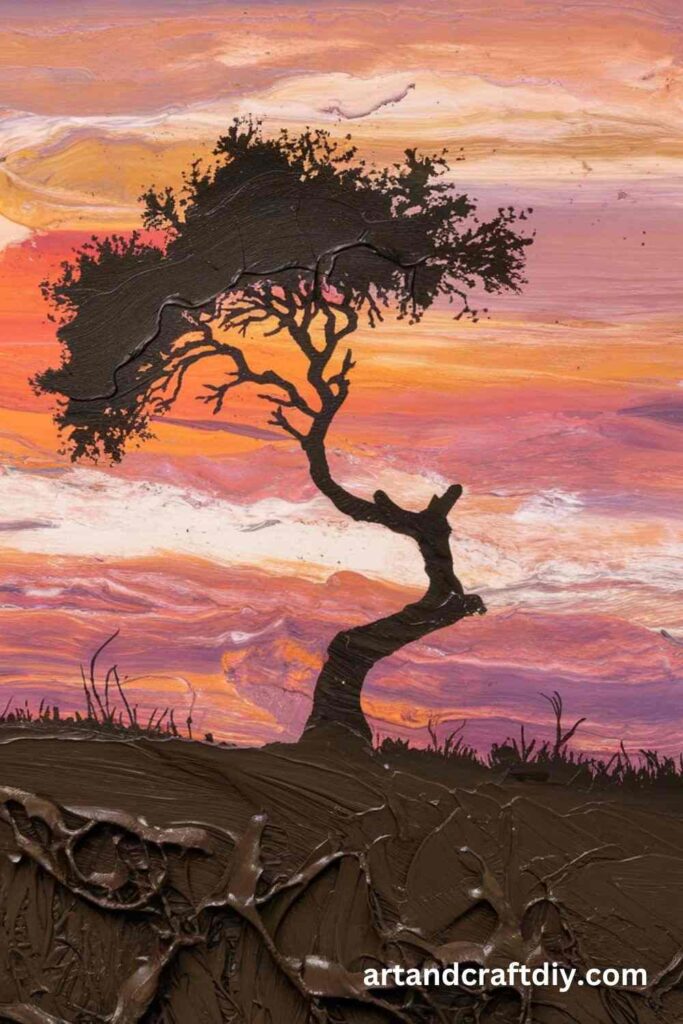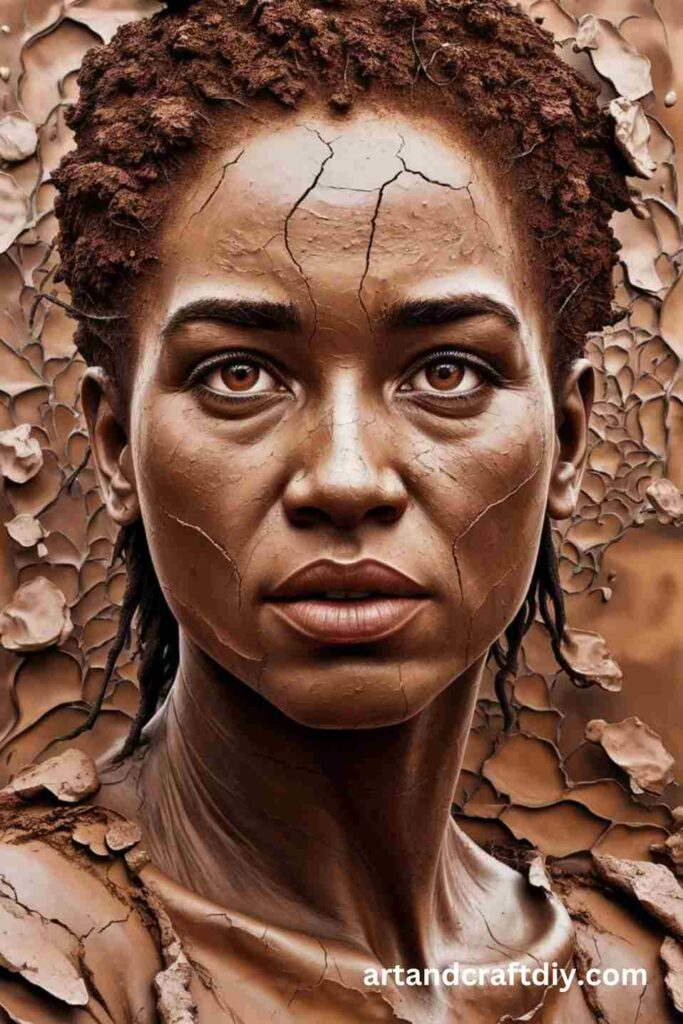Mud painting is a unique and natural art form that allows creativity to flow using one of the earth’s most abundant materials—mud. From abstract textures to detailed landscapes, mud painting offers endless possibilities for artistic expression. This eco-friendly and easily accessible medium is not only fun for all ages but also encourages a deeper connection with nature. Whether using hands, brushes, or unconventional tools, mud painting is a tactile and immersive experience that sparks imagination. To get started, all you need is mud, a surface like paper or canvas, and optional natural additives such as charcoal, clay, or crushed leaves to enhance texture and color.
Mud painting is a fascinating and natural art form that transforms simple earth into expressive works of art. Whether creating abstract patterns, nature-inspired designs, or textured landscapes, this medium offers endless possibilities for creativity. Unlike traditional paints, mud is completely eco-friendly, biodegradable, and easily accessible, making it an excellent choice for sustainable art. It is also a fun and sensory experience suitable for all ages, allowing both children and adults to connect with nature in a hands-on way.
Mud Painting Ideas
Mud painting is a creative and eco-friendly art form that uses natural mud, clay, and soil to create stunning artworks. It can be done on paper, canvas, walls, or even pottery, offering a rustic and earthy aesthetic. Artists can mix different types of soil to achieve various colors and textures, sometimes adding natural pigments for vibrancy. Mud painting is a fun activity for kids and adults alike, promoting a deep connection with nature while exploring unique artistic techniques. Whether creating abstract designs, landscapes, or tribal patterns, mud painting is a versatile and sustainable art form.
Abstract Mud Splatter Art
This painting technique is fun and spontaneous, perfect for those who love messy and expressive art.
Materials:
- Mud (different shades)
- Water
- Brushes or sticks
- Canvas or thick paper
- Spray bottle (optional)
Steps:
- Mix different types of mud with varying amounts of water to create different shades.
- Load a brush or stick with mud and flick it onto the canvas.
- Layer different shades for depth and contrast.
- Use a spray bottle to create a dripping effect.
- Let it dry completely to reveal a textured masterpiece.
Tree Bark Texture Painting
Capture the beautiful texture of tree bark using mud and natural elements.
Materials:
- Mud (thick consistency)
- Paper or canvas
- Tree bark (as a stamp)
- Brushes or sponges
Steps:
- Apply a layer of mud onto your canvas.
- Press a piece of tree bark onto the surface to create an imprint.
- Lift it gently to reveal the natural texture.
- Use a brush to add more details if desired.
- Allow it to dry completely for a rugged, nature-inspired artwork.
Handprint Mud Art
A fun and interactive way to create unique artwork using handprints.
Materials:
- Mud (different shades)
- Water
- Thick paper or fabric
- Brushes (optional)
Steps:
- Dip your hands in mud and press them onto the surface.
- Experiment with different hand positions to form patterns or animals.
- Use fingers to add extra details, such as faces or decorations.
- Let it dry for a rustic and personal artwork.
Mud Mandala Art
Create a symmetrical, meditative design using mud.
Materials:
- Mud (varied thickness)
- Fine brushes or sticks
- Canvas or paper
- Compass (optional)
Steps:
- Sketch a basic mandala outline with a stick.
- Use different shades of mud to fill in the patterns.
- Layer the mud for a raised, textured effect.
- Let it dry completely for a striking, earthy mandala.
Mud and Leaf Imprint Art
Capture the beauty of leaves by imprinting them onto a mud-painted surface.
Materials:
- Mud
- Leaves (different shapes)
- Canvas or paper
- Roller or flat object
Steps:
- Spread a thin layer of mud over the canvas.
- Press leaves firmly onto the surface.
- Remove them carefully to reveal the imprint.
- Allow it to dry naturally for a nature-inspired piece.
Silhouette Mud Painting
Create contrast by painting dark silhouettes over a lighter mud background.
Materials:
- Mud (light and dark shades)
- Canvas or paper
- Brushes or sponges
Steps:
- Paint a light mud wash as the background.
- Once dry, use darker mud to paint silhouettes of trees, animals, or people.
- Layer details to add depth.
- Let it dry completely before displaying.
Mud and Coffee Painting
Combine the earthy tones of mud with the rich browns of coffee for a unique piece.
Materials:
- Mud
- Coffee (liquid)
- Brushes
- Canvas or thick paper
Steps:
- Mix mud with coffee to create different shades.
- Use the darkest shade for outlines and the lightest for highlights.
- Layer colors to create depth.
- Let it dry for a natural-toned artwork.
Nature-Inspired Mud Collage
Enhance your mud painting by adding natural elements like leaves, twigs, and sand.
Materials:
- Mud
- Natural elements (leaves, twigs, pebbles)
- Canvas or paper
- Glue (optional)
Steps:
- Paint a mud base on your canvas.
- Press natural elements into the wet mud.
- Add extra details with a stick or brush.
- Let it dry to create a mixed-media artwork.
Mud Feather Print Painting
Use feathers to create delicate textures in the mud.
Materials:
- Mud
- Feathers
- Paper or fabric
Steps:
- Dip a feather into mud and press it onto the surface.
- Experiment with different angles for various patterns.
- Add more layers to create a complex design.
- Allow it to dry for a nature-inspired look.
Mud Portrait Painting
Create a portrait using different shades of mud.
Materials:
- Mud (various shades)
- Brushes or sticks
- Canvas or thick paper
Steps:
- Sketch a simple portrait outline.
- Use lighter mud for highlights and darker mud for shadows.
- Blend the tones to create depth.
- Let it dry for a striking, earthy portrait.
Mud Drip Painting
A fun way to create abstract art using dripping mud.
Materials:
- Mud (thin consistency)
- Canvas
- Spoon or dropper
Steps:
- Hold the canvas upright.
- Drip mud from the top and let it flow naturally.
- Tilt the canvas for unique patterns.
- Let it dry completely for a dramatic effect.
Mud and Charcoal Painting
Mix mud with charcoal to create bold contrast.
Materials:
- Mud
- Charcoal powder
- Brushes or fingers
- Paper or canvas
Steps:
- Mix mud with charcoal for different shades.
- Use charcoal for deep shadows and mud for mid-tones.
- Blend the two for a smoky effect.
- Let it dry for a dramatic look.
Mud Galaxy Painting
Create a cosmic effect with mud and natural pigments.
Materials:
- Mud
- White chalk or clay powder
- Brushes or sponges
Steps:
- Use dark mud as a background.
- Add white chalk or clay for stars.
- Blend different shades to create nebula effects.
- Let it dry for an earthy galaxy.
Mud and Thread Painting
Use thread dipped in mud to create unique patterns.
Materials:
- Mud
- Thread
- Paper or fabric
Steps:
- Dip a thread in mud.
- Lay it on paper in swirls or loops.
- Press lightly and remove.
- Let it dry for a unique pattern.
Mud Animal Silhouette
Create animal silhouettes using different shades of mud.
Materials:
- Mud
- Brushes
- Canvas or paper
Steps:
- Paint a light mud background.
- Use darker mud to create an animal shape.
- Add details like fur texture or shadows.
- Let it dry completely.
Tips for a Mess-Free Mud Painting Experience
Mud painting is a fun and creative activity that allows you to explore textures and nature-based art. However, it can get messy if not properly managed. Follow these tips to ensure a smooth and enjoyable experience.
Best Surfaces to Paint On
- Thick Paper or Cardboard: These absorb mud well and prevent excessive dripping.
- Canvas: Offers a sturdy base for detailed mud artwork.
- Wooden Panels: Ideal for long-lasting pieces and adds a natural touch.
- Outdoor Pavements or Sidewalks: Great for temporary mud art and easy to wash off.
- Plastic or Acrylic Sheets: Reusable and easy to clean after painting.
How to Clean Up After Mud Painting
- Use a Drop Cloth or Plastic Sheet: Cover the painting area to prevent spills and stains.
- Have a Bucket of Water Ready: Helps with quick hand and brush cleaning.
- Use Disposable or Washable Tools: Brushes, sponges, and even fingers can be used, so choose tools that are easy to clean.
- Wear Old Clothes or Aprons: Prevents stains on clothing.
- Wipe Surfaces Immediately: Use damp cloths or paper towels to clean up spills before they dry.
Storing Leftover Mud Paint for Future Use
- Use Airtight Containers: Prevents the mud paint from drying out.
- Label and Date Your Containers: Helps in tracking freshness and different mud types.
- Keep in a Cool, Dry Place: Avoid direct sunlight to maintain consistency.
- Add Water When Needed: If the paint thickens over time, mix in a little water to restore its texture.
- Shake or Stir Before Use: Ensures even consistency before starting a new painting session
Enhancing Mud Paintings
Mud painting is an ancient and organic art form that uses earth-based materials to create unique textures and natural aesthetics. To ensure longevity and enhance its visual appeal, artists can employ various techniques, including proper drying, sealing, color enhancement, and layering.
1. Drying and Sealing Techniques for Long-Lasting Artwork
- Allow the painting to dry naturally in a well-ventilated area, avoiding direct sunlight to prevent cracking.
- Slow drying by misting lightly with water can help control surface texture.
- Use a natural fixative like beeswax, gum arabic, or linseed oil to seal and protect the artwork.
- Apply a clear, matte sealant or resin to preserve the colors and prevent chipping.
2. Mixing Mud with Natural Dyes for Added Color
- Incorporate plant-based dyes from turmeric, beetroot, indigo, or coffee to enhance natural hues.
- Experiment with mineral pigments such as ochre, charcoal, or crushed clay for a broader color range.
- Mix dyes with the mud before painting or apply as washes over dried layers for depth.
- Test different soil compositions to achieve varied shades and tones.
3. Layering and Texture-Building Techniques
- Apply mud in multiple thin layers, allowing each to dry partially before adding the next.
- Use natural tools like leaves, twigs, or fabric to imprint patterns and add dimension.
- Experiment with thicker applications for a sculptural effect, using clay-rich mud for better adherence.
- Combine different consistencies of mud to create contrast between smooth and rough textures.
FAQ
What is mud painting?
Mud painting is an art technique that uses natural mud, mixed with water or other binders, to create unique, earthy artwork on various surfaces.
What type of mud is best for painting?
Clay-rich mud works best as it has a smoother texture and better adhesion. You can also mix different soil types to achieve varying shades and consistencies.
Can I add colors to mud paintings?
Yes! You can mix natural pigments, food coloring, or even acrylic paints with mud to create a wider range of colors.
What surfaces can I use for mud painting?
Mud paintings can be done on paper, canvas, wood, fabric, or even walls. Just ensure the surface is dry and slightly textured for better grip.

Hi, I’m Victoria, an art and craft teacher at Newark City Schools, where I have the joy of working with middle school students to help them explore their creativity and develop their artistic talents. I believe that art is a powerful way for students to express themselves, and I strive to make every lesson a fun, engaging, and inspiring experience.
I created this website to share the art and craft projects, techniques, and resources that I use in my classroom, hoping to inspire both educators and young artists alike. Whether you’re a teacher looking for new ideas or a student eager to try something new, I’m excited to provide creative tools and projects that anyone can enjoy.
When I’m not in the classroom, I love experimenting with different art forms and learning new crafting techniques. My goal is to help others discover the joy of making things with their hands, and I hope my website serves as a space for everyone to explore their creative potential.
